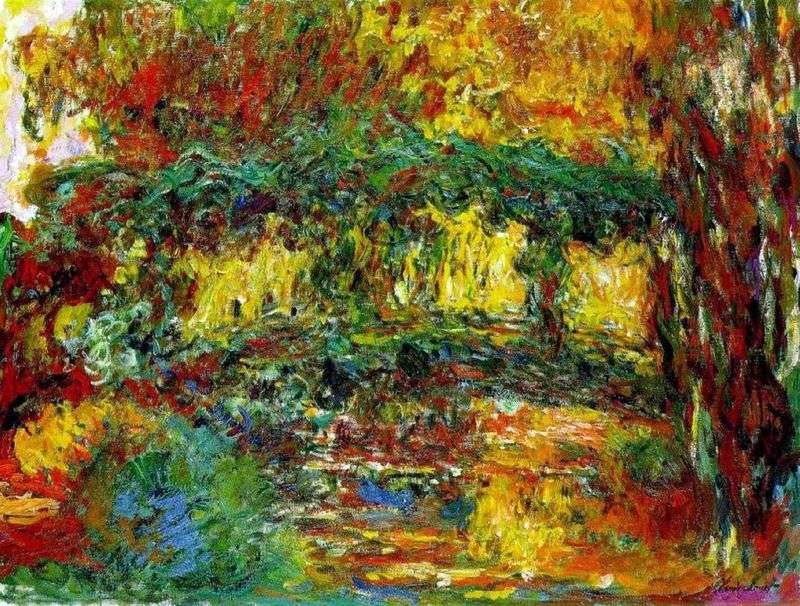
The artist’s garden not only expressed his personality, but was itself a landmark. Almost all his life, Monet lived in houses with a garden, and in Argenteuil, and in Veteia, and certainly captured them in the pictures. He was encouraged by gardening by Kaybott, who had an amazing garden in Petit Zhenvieu and maintained correspondence with him on special issues. Those were blessed times for gardeners. New plants were brought into Europe from America and from the Far East.
In the 1880s, those who did not have access to nurseries received a new opportunity – to order seeds by mail: a boom began in this new business. Monet greedily collected catalogs of seeds, and “arranged” his gardens as a pictorial picture. In his recordings made in Argenteuil, for example, there is a picture of the distribution of colors for seven rows of roses: purple, white, red, purple, yellow, cream, pink. Arriving for the first time in Giverny, he saw at the house just an ordinary garden, typical of a French village. Monet immediately began to redo it: first of all he gave it geometricalness by planting specific “garden” flowers: marshmallows, dahlias, roses, nasturtiums, gladioli; he planted them in such a way that their flowering lasted almost all year round.
The garden occupied about two acres, and part of it stretched across the road. Nearby was a small pond; Monet bought it along with the adjacent land in 1893. After receiving permission from the local authorities, he remade it into a water garden, through the floodgates, letting water from the nearby Ept river flow into it. Around the pond, he planted flowers and shrubs: part of local origin – raspberries, peonies, hollies, poplars; Part of the exotic plants are Japanese cherry, pink and white anemones.
The two gardens were deliberately opposed to each other. The one that was at the house retained the traditional French look: with avenues twined with creeping plants; paths going at right angles to each other, with steps leading from one part of the garden to another. The garden on the other side of the road and around the pond, deliberately made an impression of an exotic and romantic.
In his planning, Monet followed the advice of a Japanese gardener who had been visiting for some time in Giverny: among the modest habitual vegetation, there were Chinese ginkgoes, Japanese fruit trees, bamboos, a Japanese bridge, which seemed to migrate here from Hokusai’s engraving. There were water lilies floating in the pond, and the garden was dotted with a maze of climbing and intersecting paths.
